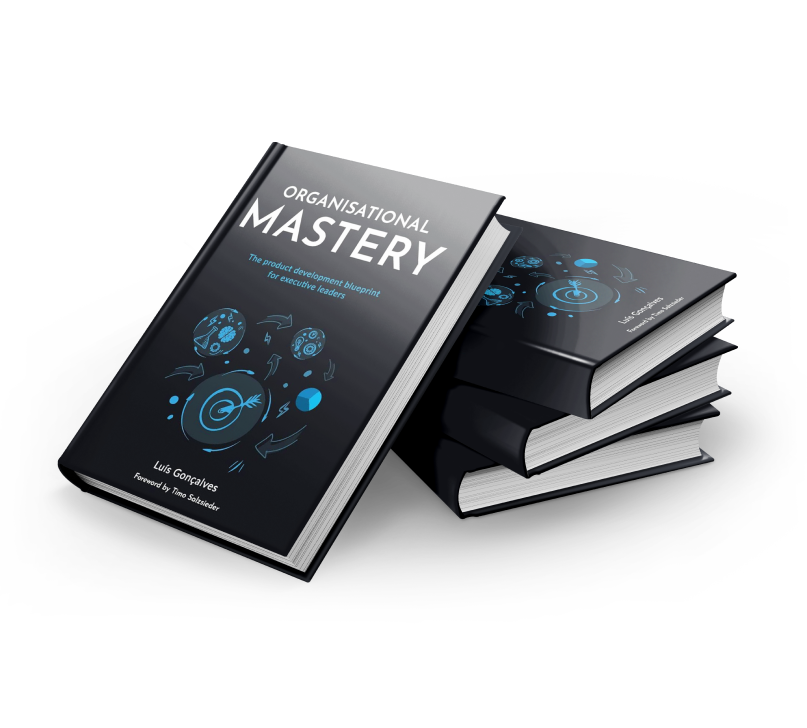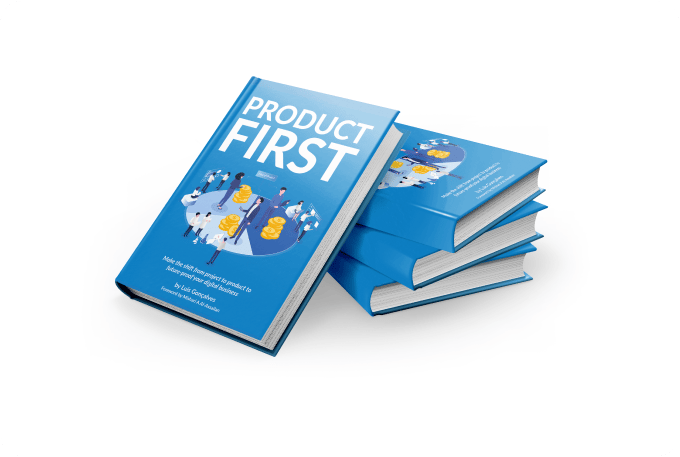Share this
Google Design Sprint: Wie Innovationen in nur einer Woche geschehen
by Luis Gonçalves on 13.01.2024 05:44:09
In der sich schnell entwickelnden digitalen Landschaft von heute erfordert der Weg von der Projektidee zur Produktrealisierung Agilität, Innovation und Effizienz. Google Design Sprints haben sich als unverzichtbare Werkzeuge in diesem Transformationsprozess herausgestellt.
Diese intensiven, zeitlich begrenzten Sitzungen nutzen das kollektive Fachwissen von funktionsübergreifenden Teams und ermöglichen es ihnen, Ideen innerhalb einer Woche zu prototypisieren, zu testen und zu validieren.
Durch die Konzentration auf schnelle Iteration und Nutzerfeedback beschleunigen Design Sprints nicht nur den Produktentwicklungszyklus, sondern stellen auch sicher, dass das endgültige Ergebnis eng mit den Bedürfnissen der Nutzer und den Marktanforderungen übereinstimmt.
Für Organisationen, die darauf abzielen, der Konkurrenz einen Schritt voraus zu sein, ist die Integration von Google Design Sprints in ihre Strategie keine Option mehr - sie ist eine Notwendigkeit."
"Die Märkte ändern sich und die Produkte entwickeln sich weiter, aber wie steht es um die Unternehmen und Organisationen? In diesem Blogbeitrag werden wir darüber sprechen, wie der Google Design Sprint Ihrer Organisation (und allen Digital Product Companies) bei diesen Herausforderungen helfen kann.
ADAPT Methodology® ist ein einzigartiges Framework für die digitale Produktentwicklung, um traditionelle, projektzentrierte Unternehmen in produktorientierte Unternehmen zu verwandeln.
Die Gesellschaft hat sich verändert und Führungskräfte benötigen Unterstützung bei der Art und Weise, wie sie ihre digitalen Produktorganisationen führen und gestalten. Das ist der Grund, warum die ADAPT Methodology® geschaffen wurde. Doch jetzt wollen wir uns intensiver mit dem Thema Google Design Sprint beschäftigen.
Google Design Sprint
Die Märkte ändern sich und die Produkte entwickeln sich weiter, aber wie steht es um die Unternehmen und Organisationen? In diesem Blogbeitrag werden wir darüber sprechen, wie der Google Design Sprint Ihrer Organisation bei diesen Herausforderungen helfen kann.
Viele traditionelle Methoden funktionieren nicht mehr, wodurch die Unternehmen hinter den jeweiligen Branchenstandards zurückbleiben. Als Ergebnis investieren Unternehmen viel Geld in verschiedene Werkzeuge, die ihren Betrieb reibungslos gestalten können.
Aber was ist, wenn Maschinen und Werkzeuge nicht das Problem sind? Was ist, wenn die menschliche Seite des Betriebs der Engpass ist?
Der Druck vom sich ändernden Markt kann sehr groß sein, und Unternehmen können wirklich Schwierigkeiten haben, mit der Nachfrage umzugehen.
Aber durch den Google Design Sprint kann jedes Team Herausforderungen bewältigen und eine systematische Methode für innovative, erprobte und getestete Lösungen sicherstellen.
Google Design Sprint ist ein Framework, das sich auf die Benutzer, das Geschäft und die Technologie konzentriert. Es handelt sich um eine Denksitzung, die wichtige Geschäfts-, Produkt- oder Projektblockaden beantwortet, die das Erstellen von Prototypen und das Testen neuer Ideen oder sogar Designs beinhalten.
Das Ausmaß des Problems ist irrelevant. Der Schwerpunkt dieser Methode liegt auf dem Konzept, wie Blockaden in Anbetracht von Zeit- und Ressourcenbeschränkungen angegangen und gelöst werden sollten.
Viele Start-ups und sogar etablierte Unternehmen haben diese Methode bereits praktiziert und eine gesteigerte Effizienz in ihren Abläufen nachgewiesen. Diese 5-Tage-Methode ist ein geradliniger, ergebnisorientierter Prozess.
Jedes Unternehmen kann diese Methode nutzen, um mit dem schnelllebigen Markt Schritt zu halten und die Vorlaufzeit zu verkürzen. Wenn Sie sich fragen, wie es in der Praxis funktioniert, schauen Sie sich das untenstehende Video an und lesen Sie danach die Details zur Implementierung.
[sc_videopair first_video_title="Erklärung zum Google Design Sprint" first_video_url="https://youtube.com/embed/zusc6HD9SFA" second_video_title="90er Jahre Einführung in den Google Design Sprint" second_video_url="https://youtube.com/embed/K2vSQPh6MCE" /]
Erklärung zum Google Design Sprint
Es gibt fünf Stufen des Sprints, die vom Sprint Master angeführt werden. Er/sie wird das Problem definieren und mit sechs Stufen arbeiten, um die Herausforderung zu lösen.
-
Understand
Der erste Teil des Sprints besteht darin, das Problem klar zu verstehen und herauszufinden, wie man es lösen kann. Diese Phase beinhaltet Brainstorming und Schnellgespräche, die als 10-15-minütige Sitzungen vom Sprint Master organisiert werden.
Teams verwenden einen anderen Ansatz und notieren ihre Gedanken mit der HMW- oder "How Might We"-Methode.
Zum Beispiel können Sie das Problem in diesen Satz einfügen: "Wie könnten wir unseren Benutzern helfen, die Seite zu finden, die sie suchen?" und "Wie könnten wir unsere Navigation für die Benutzer klar und intuitiv gestalten?"
Die Phrase HMW ist nützlich, weil jeder Satz den Teammitgliedern hilft, die richtige Denkweise zu finden. Dies ermöglicht es dem Team, kreative Ideen und Antworten zu finden, um Lösungen für das Problem zu erreichen.
-
Sketch
Die Schöpfer des Google Sprint, Jake Knapp, Braden Kowitz und John Zeratsky, haben festgestellt, dass das Skizzieren der beste Weg ist, abstrakte Ideen in einen Aktionsplan umzusetzen. Dies ermöglicht es ihnen, verschiedene Ansätze zur Lösung des Problems des Benutzers zu erkunden und zu gestalten.
Während der Skizzenphase erhalten die Teammitglieder Zeit, um Lösungen selbstständig zu verfassen. Kreative Ideen entstehen oft in konzentrierter Denkweise.
Nachdem jedes Mitglied seine Gedanken skizziert hat, wird jeder seine eigene Idee teilen und sie mit der Gruppe besprechen. Anschließend wird das Team eine Abstimmungsrunde abhalten und alle Skizzen entfernen, die nicht machbar sind oder das Problem des Benutzers nicht beantworten.
-
Decide
Nachdem alles dargelegt wurde, diskutieren die Teammitglieder die Ideen auf dem Board und entscheiden, welche die beste Lösung zur Problemlösung ist. Dies zeigt den besten Weg, der bei dem Problem hilfreich sein kann.
Nachdem jedes Mitglied seinen/ihren Lösungsentwurf vorgestellt hat, wird eine Abstimmungsrunde durchgeführt. Es ist einfach; Präsentieren und Abstimmen. Wenn die Chancen zu Ihren Gunsten stehen, wird dies zu offensichtlichen Gewinnern führen, aber meistens passiert das nicht.
Zum Beispiel gibt es möglicherweise keine klare Übereinstimmung, oder die Leute haben das Gefühl, dass sie unter Druck gesetzt werden, so abzustimmen, wie der Teamleiter abstimmt. Es gibt viele Möglichkeiten, einen Konsens zu erreichen.
Wenn ein Team nach der Abstimmung keine klare Zahl ermitteln kann, wird der Decision Matrix-Ansatz verwendet, um effektivere Ideen einzugrenzen.
Die Matrix ist ein einfaches Diagramm, das ihnen hilft, alle Ideen anhand eines Anforderungssatzes zu bewerten, der für die Ziele des gesamten Sprints am nützlichsten ist.
Das Team wird das Risiko gegen den Nutzen abwägen, und die Lösungen werden danach bewertet, welche Risiken sie bergen und welchen Wert sie haben.
-
Prototype
Ideen testen, ohne Zeit zu verschwenden, um wertvolle Ressourcen zu sparen. Das bedeutet, die Struktur und Grundelemente des Prototyps zu erstellen, um echtes Feedback von Testern zu erhalten. Betrachten Sie Ihren Prototyp als ein herausforderndes Experiment, um Ihre Hypothese zu überprüfen.
Das bedeutet, kritisch darüber nachzudenken, was Sie bauen werden, um die Eingaben und Rückmeldungen zu erhalten, die Sie benötigen, um Ihre Hypothese zu bestätigen oder zu widerlegen. Diese Phase ermöglicht es dem Team zu sehen, was funktionieren wird und was nicht.
Das Team wird in kleine Gruppen aufgeteilt und mit verschiedenen Aufgaben betraut. Es gibt Ersteller, Schreiber, Designer und den Tester – der den Benutzertest durchführt und Feedback gibt.
-
Validate
Die letzte Phase besteht darin, zu validieren. Zeigen Sie den Prototyp echten Benutzern außerhalb des Teams und sammeln Sie Feedback zu dem, was nicht funktioniert. Das Team wird Interviews durchführen und direktes Feedback von der Zielgruppe erhalten.
Das Team wird die Benutzer beobachten, wie sie den Prototyp ausprobieren, und sehen, ob es größere Probleme mit dem Design und dem Benutzerverhalten gibt, wenn sie ihn verwenden. Dies ermöglicht dem Team, verschiedene Wege zu lernen, die Lösung mit der definierten Strategie zu erstellen.
Sobald die Validierungssitzungen abgeschlossen sind, versammeln Sie das Team, um die Ergebnisse zu überprüfen und zu verfeinern. Das Team erstellt eine visuelle Präsentation aus der Validierungssitzung, oder Sie können die Ergebnisse in eine Präsentation umwandeln.
Das Wesentliche hierbei ist, dass die Teilnehmer die Ergebnisse gemeinsam überprüfen, die Erkenntnisse aufnehmen und die nächsten Schritte für das Projekt besprechen. Jeder Sprint sollte eine Aktionsliste mit Lerninhalten haben, die zur nächsten Produktentwicklungssitzung führt.
Die Methode des Google Design Sprint ermöglicht es Organisationen, Herausforderungen und Probleme zu lösen, die validiert werden können, ohne wertvolle Ressourcen für andere Lösungen zu verschwenden, die dem Team nicht einmal beim Lernen geholfen haben.
Durch das Definieren von Strategie und schnellen Prototypen können Sie tatsächlich schnelles Feedback erhalten und sehen, ob die von Ihnen erstellte Lösung umsetzbar ist.
Einige könnten den systematischen Ansatz des Google Design Sprint als Bedrohung für die interne Organisation ansehen, aber das sollte nicht der Fall sein. Die integrative Anstrengung beseitigt für eine Veränderung die Hierarchie.
Außerdem gibt es den Teilnehmern das Gefühl, dass ihre Meinungen geschätzt werden. Es trägt auch zu einem besseren Teamgeist und einer größeren Zusammenarbeit im Unternehmen bei.
Vor allem gibt uns dieser Prozess nützliche und kreative Ideen. Es trainiert uns, unsere kreativen Muskeln zu flexen und neue Lösungen zu generieren, wobei die Bedürfnisse der Benutzer Priorität haben.
Vor dem Abschluss des Sprints sollte der Sprint Master alle Beteiligungen loben und anerkennen und eine Feier für all das Gelernte, das das Team erworben hat, fordern.
Der Sprint Master kann alle zu einem Abschlusskreis einladen und die Teilnehmer nach ihren Erkenntnissen und Einsichten aus der Erfahrung fragen. Ein absolutes Muss, damit sich die Teilnehmer fühlen, als hätten sie nach dem Sprint eine bedeutende Mission erfüllt.
Hat Ihnen dieser Artikel gefallen?
Wir ermöglichen Führungskräften, durch die Anpassung ihres projektzentrierten Unternehmens zu einem produktorientierten Unternehmen, hoch geschätzt und anerkannt zu werden.
Die Gesellschaft hat sich verändert und Führungskräfte benötigen Unterstützung, um ihre Unternehmen an das digitale Zeitalter anzupassen. Aus diesem Grund wurde die ADAPT Methodology® geschaffen!
Wenn Sie wissen möchten, ob Ihr Unternehmen projektzentriert oder produktgeführt ist, machen Sie einfach unseren „Project To Product Scorecard“.
Wenn Sie wissen möchten, wie wir Ihnen bei Ihrem Transformationsbeginn helfen können, werfen Sie einen Blick auf unser: „Projekt zu Produkt Schulung“.
Wenn Sie an einer Transformation in Ihrem Unternehmen interessiert sind, sehen Sie sich bitte unser Angebot an: „Projekt zu Produkt Beratung“.
Share this

Organisational Mastery
Get your free copy

ADAPT
Get your free copy

Product First
Get your free copy

